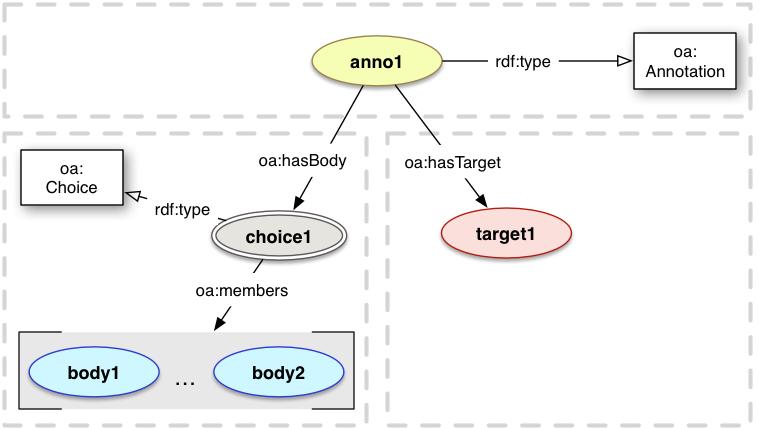W3C Web Annotation Data Model - bounswe/bounswe2022group4 GitHub Wiki
What is Web Annotation Data Model?
The Web Annotation Data Model provides an extensible, interoperable framework for expressing annotations such that they can easily be shared between platforms, with sufficient richness of expression to satisfy complex requirements while remaining simple enough to also allow for the most common use cases, such as attaching a piece of text to a single web resource.
Annotations can be used to "provide a trace of use; third party commentary; information sharing; information filtering; semantic labeling of document content; and enhanced search". Annotations can help readers discover new content by subscribing to annotation feeds. They can also share annotations, thereby creating communities of common interests. Publishers can use annotations to add value to their content. Many systems are using annotations for online collaboration.
An annotation is considered to be a set of connected resources, typically including a body and target, and conveys that the body is related to the target.
Annotations can be used to link resources together, being referenced as the Body and Target. The Target resource is always an External Web Resource, but the Body may also be embedded within the Annotation. External Web Resources may be separately dereferenced to retrieve a representation of their state, whereas the embedded Body does not need to be dereferenced as the representation is included within the Annotation's representation.
The Web Annotation Data Model is defined using the following basic principles:
- An Annotation is a rooted, directed graph that represents a relationship between resources.
- There are two primary types of resource that participate in this relationship, Bodies and Targets.
- Annotations have 0 or more Bodies.
- Annotations have 1 or more Targets.
- The content of the Body resources is related to, and typically "about", the content of the Target resources.
- Annotations, Bodies and Targets may have their own properties and relationships, typically including creation and descriptive information.
- The intent behind the creation of an Annotation or the inclusion of a particular Body or Target is an important property and represented by a Motivation resource.
Basic model of annotation
An example of an annotation model
Example Basic Annotation Model:
{
**"@context":** "http://www.w3.org/ns/anno.jsonld",
"id": "http://example.org/anno1",
"type": "Annotation",
"body": "http://example.org/post1",
"target": "http://example.com/page1"
}
Example External Web Resources:
{
"@context": "http://www.w3.org/ns/anno.jsonld",
"id": "http://example.org/anno2",
"type": "Annotation",
"body": {
"id": "http://example.org/analysis1.mp3",
"format": "audio/mpeg",
"language": "fr"
},
"target": {
"id": "http://example.gov/patent1.pdf",
"format": "application/pdf",
"language": ["en", "ar"],
"textDirection": "ltr",
"processingLanguage": "en"
}
}

